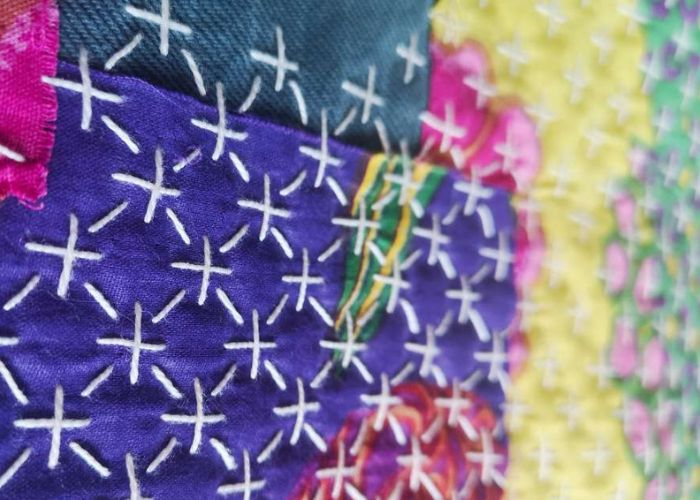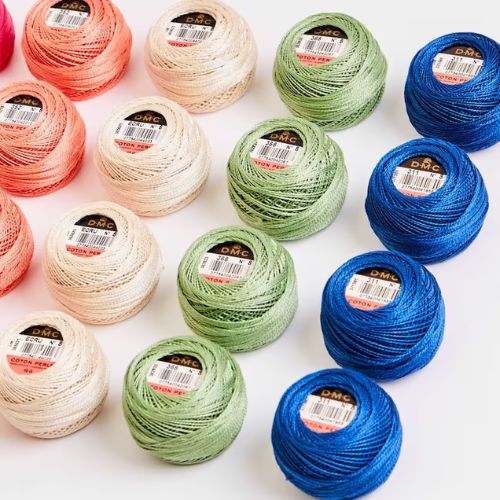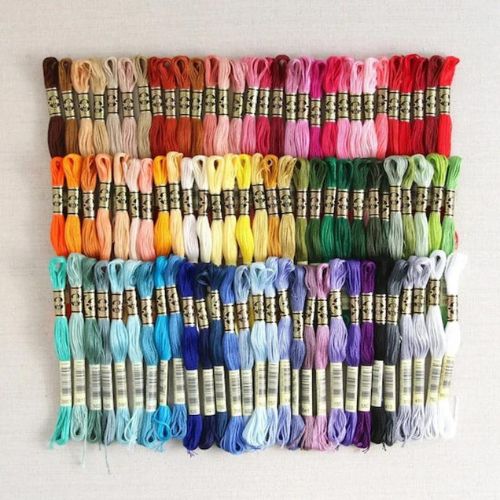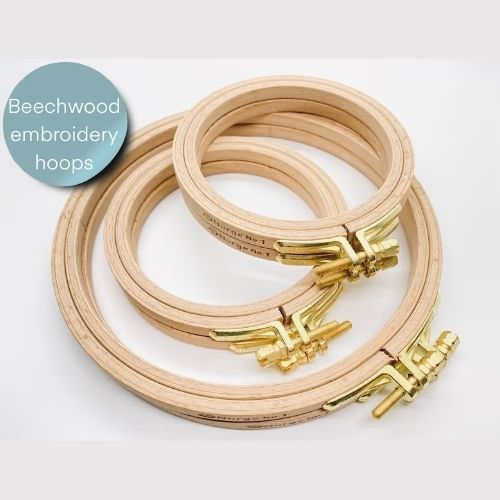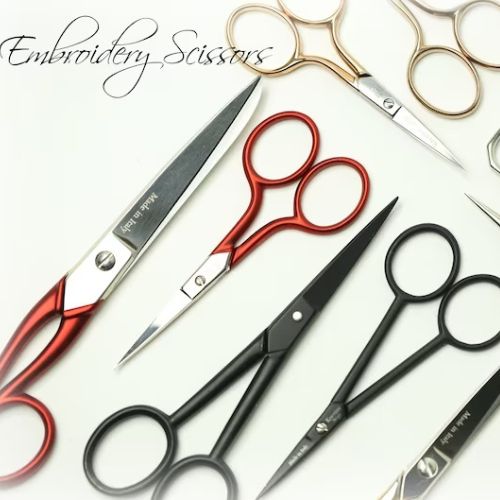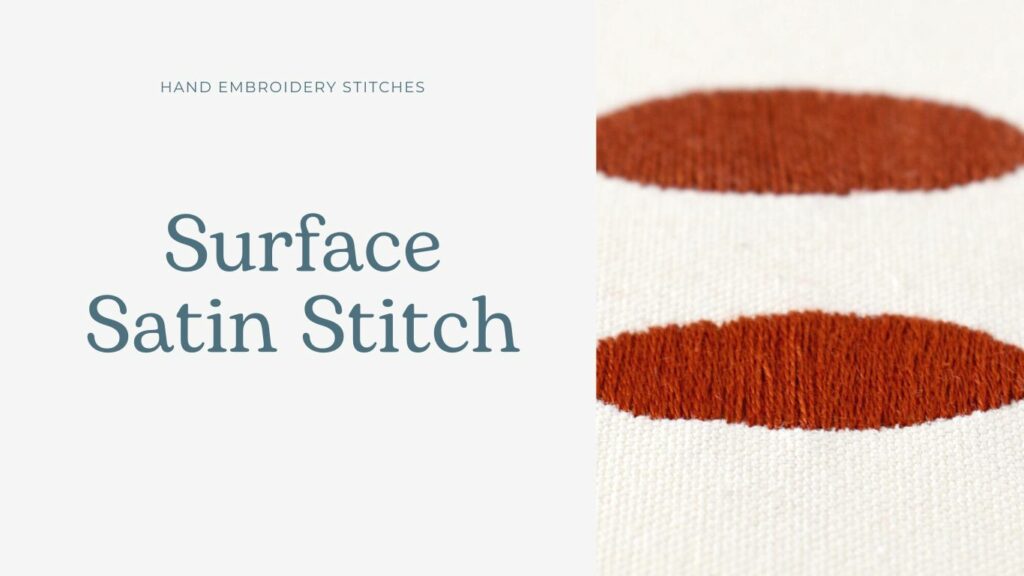
Surface Satin Stitch
Surface Satin Stitch is a filling stitch that visually resembles Satin Stitch but uses much less thread. It’s even called a Thread Saver Stitch!
The stitch technique is very straightforward – parallel straight stitches are laid in opposite directions to fully cover the fabric’s surface. This method results in tiny stitches on the back side of the fabric. On the front side, the final result resembles the Satin Stitch.
Other names of the stitch
This hand embroidery stitch is called Laid Work, Bayeux Stitch, False Satin Stitch, Up and Down Shading, and Thread Saver Stitch.
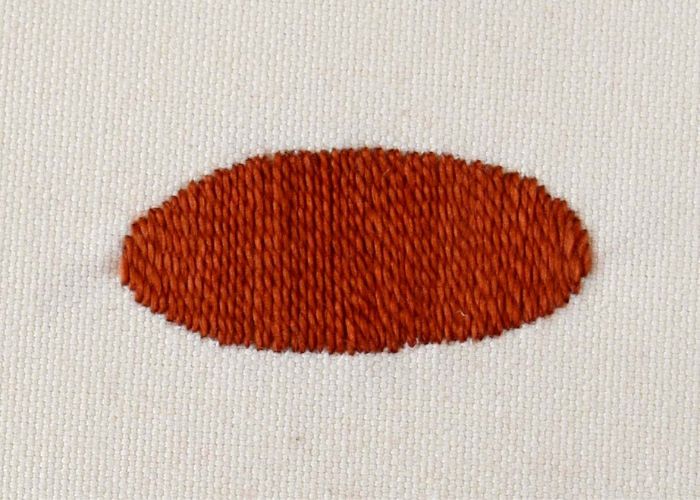
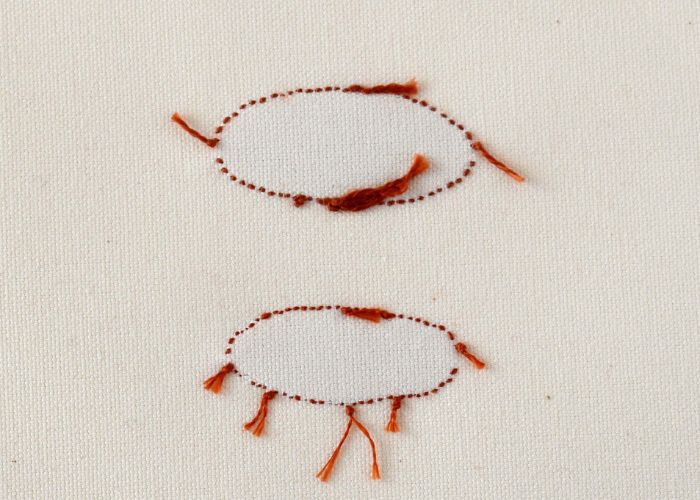
Applications of this filling stitch
Laid work is one of the primary embroidery stitches used in Bayeux Tapestry. In Kantha work, Surface Satin stitch is used to fill small details.
You can use this filling technique as a substitute for the Satin Stitch – for filling geometrical shapes and botanical details, stitching the backgrounds, etc. Remember that with Surface Satin Stitch, keeping the stitches neat looking and parallel is a bit harder. On the other hand, you will save a lot of thread if you change the Satin Stitch with this thread saver.
Other stitches from the Satin stitch family
- Long and Short Stitch
- Leaf Stitch
- Padded Satin Stitch
Learn how to embroider Surface Satin Stitch stitch
Follow the step-by-step tutorial with detailed photos below, and you will learn the Laid work embroidery in no time. If you are a visual learner, watch a video lesson in the tutorial or on the Practical Embroidery YouTube channel to learn this hand embroidery stitch faster.
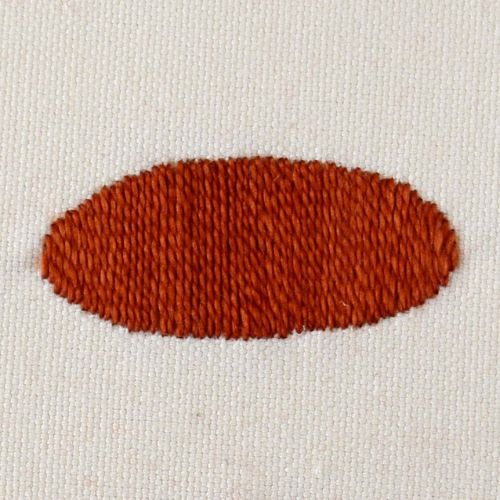
How to embroider Surface Satin Stitch Stitch
Step-by-step hand embroidery tutorial
Instructions
1. Draw the shape you want to fill with Surface Satin Stitch. Divide the shape in half and take the needle up on the marking line at the center of the shape. Starting at the center will help you maintain the stitches parallel.
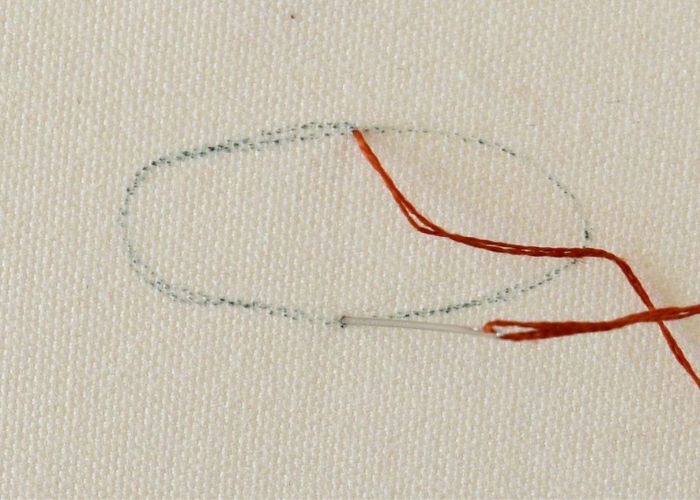
2. Make a straight stitch to the opposite side of the figure. Take the needle down and pull all the thread to the back.
3. Take the needle up as close as possible to the hole of the first stitch. Make a parallel stitch to the opposite side.

4. Take the needle down, and then – take it up adjacent to where you brought it down.
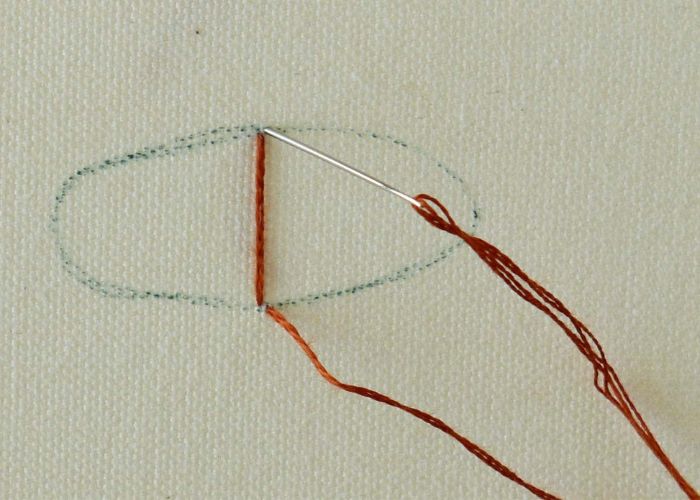
5. Continue filling the first side of the figure with these parallel stitches.
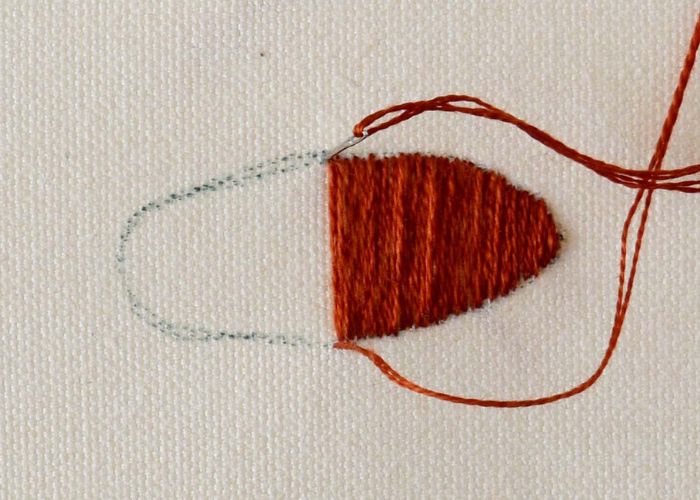
6. When one side of the shape is filled, move to the second part of the figure and fill it the same way.

Video tutorial
Tools and materials I used for this sampler
Disclaimer. To cover the cost of creating free embroidery patterns and video tutorials for this blog, I do sometimes link to products. Please assume these links are affiliate links. If you choose to buy through my links then THANK YOU – it will make it possible for me to keep doing this.
What’s next?
If you’re in the mood to explore more hand embroidery stitches, check out the Stitches and Techniques page for the list of other fantastic stitches available on my blog. From timeless classics to modern twists, a whole world of stitches is waiting for you to explore and master. So, grab your hoop and needle, and let’s stitch our way to creative bliss!
Don’t miss a thing!
Follow me on Instagram, Facebook, and Pinterest. Or why not subscribe to Practical Embroidery and get embroidery tips straight to your inbox every few weeks?
Need More Guidance?
The top 10 hand embroidery stitches to learn is a free online course created for beginners.
